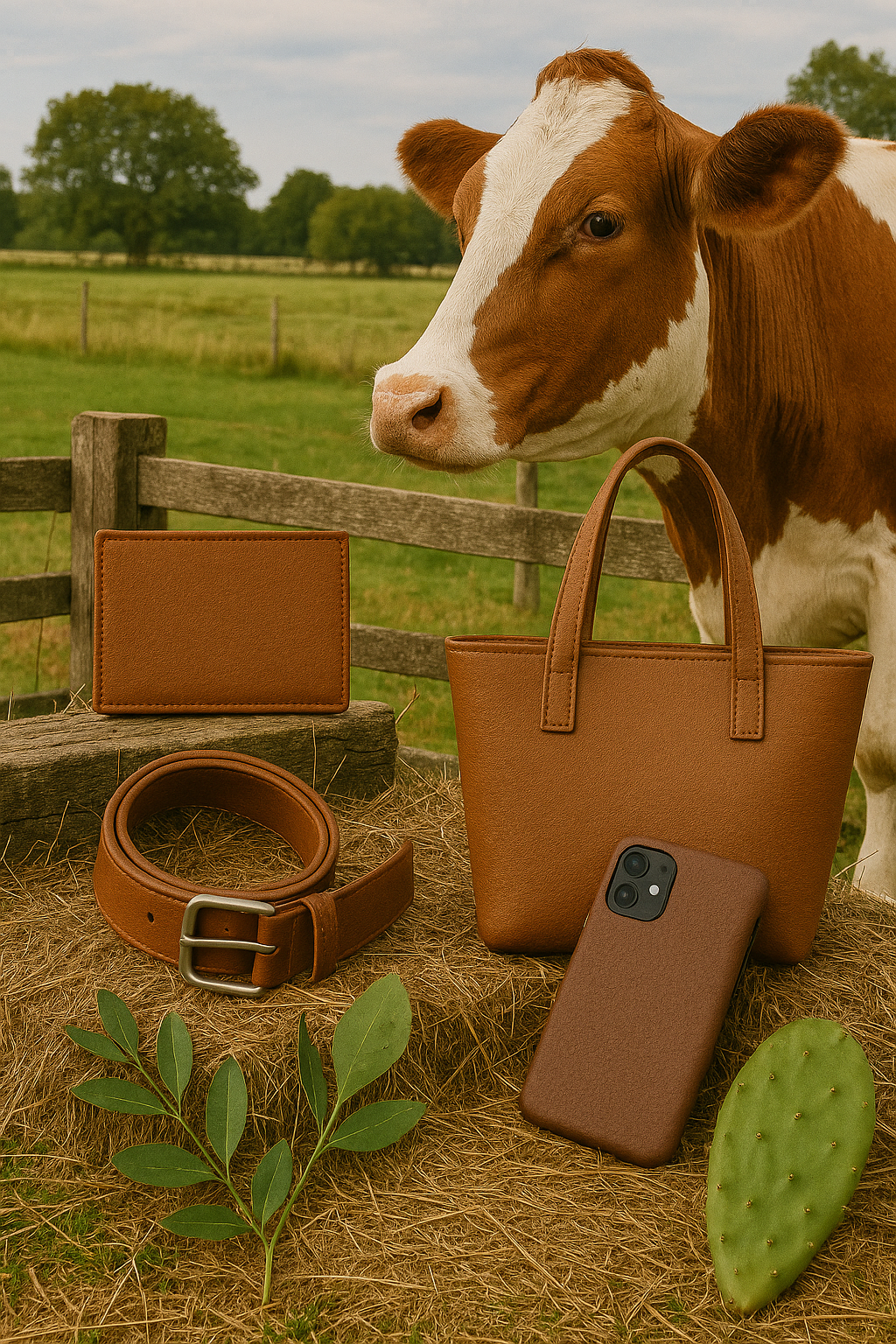How Plant Based Leather Products Are Changing Fashion for Good

When you think of leather, it’s easy to associate it with durability and timeless fashion. But behind those polished surfaces lies an uncomfortable truth: animal and synthetic leathers come with a high environmental and ethical cost.
From pollution-heavy tanning processes to harsh working conditions faced by tannery workers and farmers, the traditional leather industry often places a burden on both people and the planet. These realities are rarely visible to consumers — but they’re very real for the communities affected.
Traditional leather relies on energy-intensive production, toxic chemicals, and animal cruelty. Synthetic options, though free from animal products, contribute to plastic pollution and aren’t biodegradable. For people who want to do better — but still enjoy the classic look and feel of leather — it’s been a tough choice.
Now, there's a better option.
Plant based leather products offer the same quality and style while supporting sustainability and ethical values. In this article, we’ll dive into why these products are gaining popularity, how they solve real problems, and what they mean for anyone looking to align their purchases with a more conscious lifestyle.
The Hidden Cost of Traditional Leather
Leather products often carry an unspoken environmental and ethical burden.
Here’s why traditional leather is problematic:
- Animal leather involves livestock farming and leather tanning, which uses large amounts of water and releases toxic chemicals into the environment.
- Synthetic leather (PVC or PU) avoids animal use but adds to long-term plastic waste and microplastic pollution.
-
Workers in tanneries are often exposed to dangerous chemicals and face unsafe, underregulated working conditions, particularly in developing countries.
The United Nations Environment Programme reports that the fashion industry, including leather production, is responsible for up to 10% of global carbon emissions. Add in the animal cruelty and worker exposure to carcinogenic chemicals, and it's clear this isn't sustainable.
What Are Plant Based Leather Products?
Plant based leather products are made from natural, renewable materials — often agricultural waste — and processed with significantly lower environmental impact.
These materials include:
- Pineapple leaves
- Tomato Fiber
- Banana Fiber
- Cork Bark
- Cactus
- Mushroom mycelium
- Apple skins and
- Pulp Coconut
Why Choose Plant Based Leather Products?
These sustainable alternatives check all the right boxes:
-
Eco-friendly – Made from renewable or waste materials.
- Cruelty-free – No animals harmed in production.
- Non-toxic – Free from harmful tanning chemicals.
- Biodegradable – Many naturally decompose over time.
-
Durable and stylish – Comparable in performance to traditional leather.
How to Avoid Unethical Leather Purchases
Transitioning away from harmful leather is easier than you think. It starts with awareness and simple shifts in buying behavior.
Here are a few tips to guide your switch to plant based leather products:
-
Read the material details.
Look for specific plant-based components and avoid vague terms like "eco-leather." -
Choose responsible brands.
Research companies that share transparent info on how and where their materials are sourced. -
Buy better, not more.
Invest in durable, high-quality items that are designed to last. -
Educate and share.
Talk about your choices with friends and family to spread awareness and encourage mindful shopping.
Conclusion: Small Choices, Big Change
The fashion world is waking up — and the rise of plant based leather products is a sign of what’s possible when innovation meets intention.
These sustainable alternatives offer all the benefits of traditional leather, without the environmental and ethical downsides. By learning more and choosing better, you become part of a growing community committed to making everyday purchases more meaningful.
Ready to explore plant based leather for yourself? Look for brands and products that value transparency, sustainability, and quality — and take the first step toward fashion that truly feels good.
